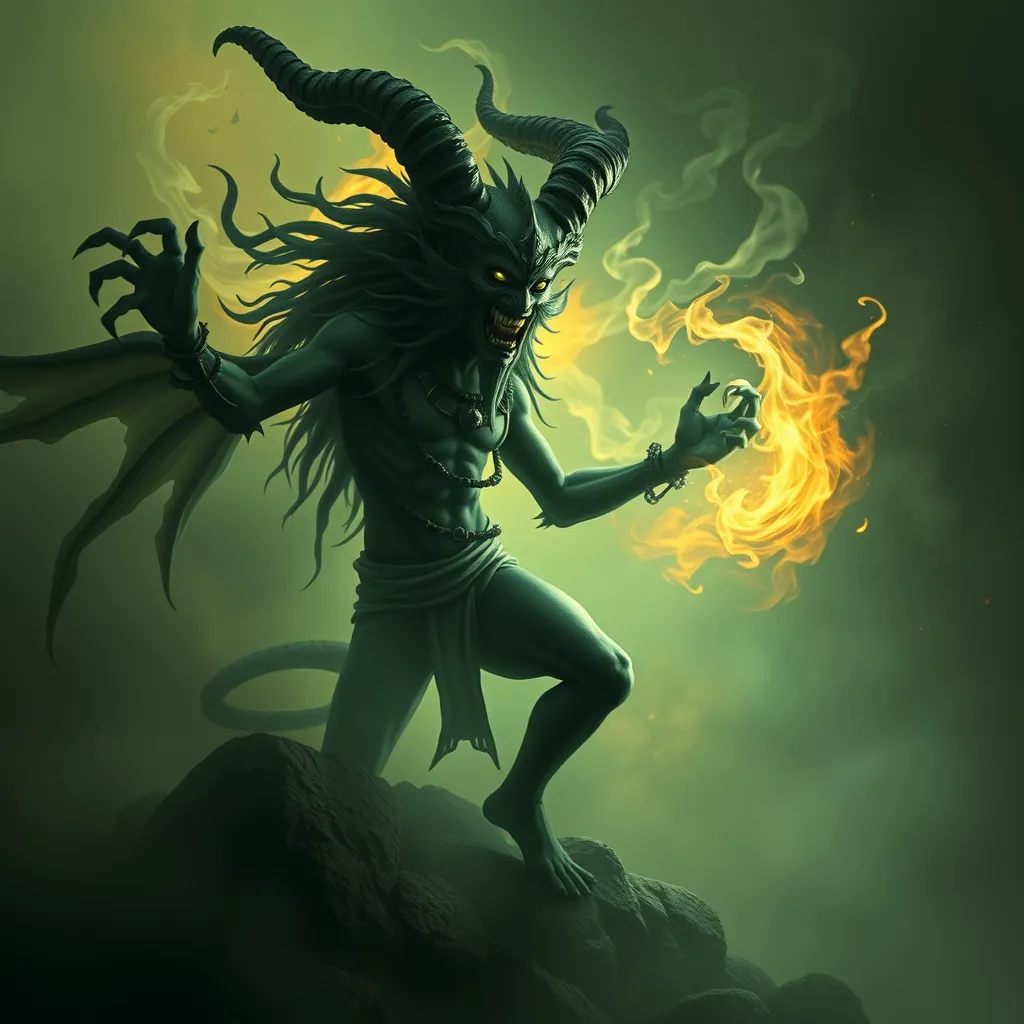The Phoenix: A Mythical Bird of Rebirth
The phoenix, a legendary creature found in ancient myths and folklore, embodies the concept of rebirth, renewal, and immortality. This magnificent bird, often depicted with vibrant plumage, is said to live for centuries before setting itself ablaze, only to rise again from its own ashes, forever young. The phoenix’s cycle of death and resurrection symbolizes the cyclical nature of life, death, and the enduring power of hope.
The legend of the phoenix originated in ancient Egypt, where it was associated with the sun god Ra, who rose each morning, symbolizing renewal and the cycle of life. In Egyptian mythology, the phoenix represented the eternal cycle of life, death, and resurrection, with the sun being compared to a phoenix that dies each evening and is reborn each morning. The earliest written accounts of the phoenix are found in the works of Herodotus, a Greek historian who lived in the 5th century BC. He described the phoenix as a bird with brilliant red and gold feathers, which lived for 500 years before building a nest of spices, setting itself aflame, and rising again from the ashes.
The phoenix myth spread throughout the ancient world, finding its way into Greek, Roman, and even Christian traditions. In Greek mythology, the phoenix was associated with the goddess Hera, the queen of the gods, and the phoenix was used to symbolize the power of rebirth and the cyclicality of nature. The Romans also adopted the phoenix, using it as a symbol of the emperor’s divine power and immortality.
The phoenix is more than just a mythical creature; it is a powerful symbol that has captivated the human imagination for centuries. Its ability to rise again from its ashes represents the potential for renewal and transformation, even in the face of adversity. The phoenix reminds us that even in death, life can be reborn, and that hope and renewal are always possible.
The Tree: A Symbol of Life and Growth
Throughout history, the tree has held a significant place in human culture, serving as a powerful symbol of life, growth, and the interconnectedness of nature. Its enduring presence, ability to adapt, and resilience against the elements have made it a timeless representation of vitality and the cyclical nature of life.
The tree’s roots, firmly anchored in the earth, symbolize the foundations of life, representing stability, strength, and connection to the past. Its trunk, reaching towards the heavens, signifies growth, aspiration, and the journey towards enlightenment. The branches, spreading outward, symbolize connection, community, and the sharing of knowledge and life. Finally, the leaves, changing with the seasons, represent the ever-changing nature of life, the cycle of birth, growth, decline, and renewal.
Trees have been revered by diverse cultures across the globe, each attributing its own unique symbolism and meaning to this powerful image. In many ancient cultures, trees were considered sacred, often serving as focal points in religious ceremonies and rituals.
The Oak, revered by the ancient Celts, represented strength, wisdom, and longevity. The Ash, a significant tree in Norse mythology, was believed to connect the nine realms, representing the interconnectedness of all things. The Willow, associated with mourning and death by many cultures, also symbolized resilience and adaptability.
In the realm of literature, trees have often served as metaphors for the human experience. The tree’s growth, from a fragile seed to a towering giant, reflects the journey of life, encompassing childhood, maturity, and old age.
The tree’s ability to endure the ravages of time, standing tall despite storms and droughts, symbolizes resilience, strength, and the ability to overcome adversity. Ultimately, the tree’s shedding of leaves in autumn, only to sprout new ones in spring, represents the constant cycle of life, death, and rebirth.
The Phoenix and the Tree: A Symbiotic Relationship
The phoenix and the tree, two powerful symbols of life, growth, and renewal, share a profound and symbiotic relationship. Each symbol complements the other, creating a holistic representation of the cyclical nature of life and the enduring power of hope.
The phoenix, symbolizing rebirth and transformation, finds its home and sustenance in the tree. The tree, representing stability, growth, and the cycle of life, provides the phoenix with a haven, a place to rest, and a source of nourishment. The tree also acts as a witness to the phoenix’s cyclical journey, providing a grounding force amidst the fiery transformation.
As the phoenix rises from its ashes, the tree stands tall, symbolizing the enduring nature of life amidst transformation. The phoenix’s fiery rebirth invigorates the tree, renewing its vitality and ensuring its continued growth and resilience. This cycle of renewal and rejuvenation represents the interconnectedness of all things in nature.
The phoenix and the tree together represent a powerful message of hope and resilience. They remind us that even in the face of adversity, life can be reborn, and that the cycle of life, death, and renewal is an essential part of our existence. The phoenix, through its fiery rebirth, symbolizes the potential for transformation and the ability to overcome even the most challenging of circumstances. The tree, with its roots firmly planted in the earth, provides a foundation for growth and stability, reminding us of the interconnectedness of all life.
The Phoenix as a Metaphor for Renewal
The phoenix, with its mythical ability to rise from its own ashes, serves as a potent metaphor for renewal, representing the potential for transformation and the ability to overcome adversity. This symbol resonates deeply with the human experience, providing a source of hope and encouragement in the face of challenges.
The phoenix’s fiery death and subsequent rebirth symbolizes the process of letting go of the old and embracing the new. It reminds us that endings are not always the end but rather opportunities for growth and transformation. Just as the phoenix emerges from the ashes, we too can emerge from difficult experiences stronger and more resilient.
The phoenix’s journey from death to rebirth also speaks to the power of hope. Even in the darkest of times, when all seems lost, the phoenix reminds us that there is always potential for renewal. This symbol encourages us to believe that we can overcome obstacles and emerge from adversity with renewed purpose and strength.
The phoenix’s story is a reminder that we are not bound by our past. We have the ability to break free from limiting beliefs and patterns, to shed our old selves and emerge as something new and transformed. The phoenix’s journey encourages us to embrace change and to trust in the process of transformation.
The Tree as a Representation of the Cycle of Life
The tree, with its enduring presence and cyclical nature, serves as a powerful symbol of the cycle of life, representing growth, decay, and renewal. This timeless image captures the essence of the human experience, reflecting the stages of life from birth to maturity to decline and ultimately, renewal.
The tree’s roots, firmly planted in the earth, represent the foundations of life, symbolizing our connection to the past and the lineage that came before us. The tree’s trunk, reaching towards the heavens, signifies growth and development, representing our journey through life, encompassing childhood, adolescence, and maturity. The branches, spreading outward, symbolize our connections to others, representing our family, friends, and community.
The tree’s leaves, changing with the seasons, embody the ever-changing nature of life. They represent the cyclical nature of our experiences, highlighting periods of growth, decline, and renewal. Just as the leaves fall in autumn, we too may experience periods of decline and loss. But, as new leaves emerge in spring, we can find renewed hope and the potential for new beginnings.
The tree’s ability to adapt and endure the elements throughout its life cycle represents resilience and the ability to overcome adversity. It reminds us that we too can weather life’s storms and emerge stronger. The enduring nature of the tree also symbolizes the cyclical nature of life, death, and rebirth, reminding us that even though life may seem to end, its essence lives on.
The Phoenix and the Tree in Art and Literature
The enduring power of the phoenix and the tree as symbols of life’s cycle has inspired countless artists and writers throughout history. These symbols have found their way into various forms of artistic expression, from ancient cave paintings and sculptures to modern-day literature and film.
In ancient Egyptian art, the phoenix was often depicted as a majestic bird with vibrant plumage, symbolizing the cyclical nature of life, death, and resurrection. The phoenix could be seen adorning tombs and temples, serving as a reminder of the eternal cycle of life.
The tree has been a recurring motif in art and literature throughout history. Paintings by renowned artists like Vincent van Gogh and Gustav Klimt often feature trees, representing their unique connection to nature and the cyclical nature of life. The tree’s ability to endure the ravages of time, standing tall despite the challenges of life, has resonated with artists of all ages.
In literature, the phoenix and the tree have been used as powerful metaphors to depict themes of renewal, transformation, and the enduring power of hope. In the works of J.R.R. Tolkien, the Tree of Valinor, a symbol of the Eldar, embodies the beauty, strength, and eternal life of the ancient ones.
In the story of the phoenix, we see a powerful allegory for the human spirit’s ability to overcome adversity. The phoenix rises from the ashes, embodying the potential for renewal and transformation, even in the face of great loss. The tree, with its enduring presence, standing firm through the changing seasons, offers a timeless symbol of life and resilience.
The Phoenix and the Tree in Different Cultures
The phoenix and the tree have been significant symbols in various cultures worldwide, representing different interpretations of their meanings.
The ancient Egyptians connected the phoenix to the sun god Ra, representing the cyclical nature of life, death, and resurrection. They believed that the phoenix was a bird that lived for 500 years before burning itself on a pyre and rising again from the ashes. This myth symbolized the renewal of life and the eternal cycle of nature.
In Greek mythology, the phoenix was associated with the goddess Hera, the queen of the gods. The phoenix was also a symbol of the cyclical nature of life, death, and resurrection, with stories depicting the bird setting itself on fire and rising again from the ashes, symbolizing renewal and immortality.
The Chinese culture associated the phoenix with the mythical creature “Fenghuang,” a symbol of grace, beauty, and prosperity. The Fenghuang embodied the virtues of benevolence, loyalty, and harmony. The tree in Chinese culture symbolizes growth, prosperity, and the connection between heaven and earth.
In many cultures, trees are considered sacred, embodying various virtues like strength, wisdom, and resilience. The oak, for example, was revered by the ancient Celts for its strength and longevity. The willow, often associated with mourning, also symbolizes adaptability and resilience.
These examples demonstrate how the phoenix and the tree have been embraced by various cultures, each interpreting their meanings within their unique beliefs and traditions.
The Phoenix and the Tree: A Psychological Interpretation
The phoenix and the tree, as symbols of life’s cycle, offer valuable insight into the human psyche. They represent the human capacity for growth, renewal, and the ability to overcome adversity.
The phoenix, with its ability to rise from the ashes, symbolizes the psychological process of transformation. When we encounter difficult experiences in life, the phoenix reminds us that we have the potential to heal, grow, and emerge stronger from these challenges. Just as the phoenix burns away its old self to make way for a new one, we too can shed old patterns and behaviors to embrace new beginnings.
The tree, with its constant connection to the earth and its steady growth, represents the human need for grounding and stability. The tree’s roots, firmly anchored in the earth, symbolize our connection to the past and the foundations of our being. The tree’s branches, reaching towards the heavens, symbolize our aspirations and our journey towards self-discovery.
The tree’s cyclical nature, with its constant growth and renewal, symbolizes the human life cycle, from birth to death and beyond. The tree’s ability to adapt to changing seasons represents our capacity for resilience and the ability to navigate life’s challenges. This resilience allows us to find renewal, even in the face of adversity.
The Phoenix and the Tree: A Spiritual Interpretation
The phoenix and the tree, as powerful symbols of life’s cycle, hold profound spiritual meaning. They represent the interconnectedness of all things, the eternal nature of the soul, and the journey of spiritual growth and enlightenment.
The phoenix’s fiery rebirth symbolizes the soul’s journey through death and rebirth, representing the transcendence of the physical world to reach a higher plane of existence. The phoenix’s ability to rise from the ashes represents the potential for renewal and transformation, both on a physical and spiritual level.
The tree, with its roots firmly planted in the earth and its branches reaching towards the heavens, symbolizes the connection between the physical and spiritual realms. Its roots represent our connection to the earth and our material existence, while its branches represent our connection to the spiritual realm, seeking knowledge, wisdom, and enlightenment.
The tree’s cyclical nature, with its constant growth and renewal, symbolizes the eternal nature of the soul. Just as the tree sheds its leaves in autumn only to sprout new ones in spring, the soul may experience periods of growth, decline, and renewal throughout its journey.
The phoenix and the tree together reflect the spiritual journey, highlighting the interconnectedness of all things and the potential for spiritual growth and enlightenment. They remind us that even in the face of adversity, we can find renewal and transformation, and that the pursuit of spiritual growth is a continuous cycle, leading us towards a higher state of being.
The Phoenix and the Tree: A Modern-Day Relevance
The phoenix and the tree, as timeless symbols of life’s cycle, remain relevant in today’s world. Their enduring messages of renewal, resilience, and the interconnectedness of life provide valuable insights and inspiration in a rapidly changing world.
In a society that often values immediate gratification and material possessions, the phoenix reminds us that true fulfillment comes from embracing change, overcoming adversity, and finding meaning beyond the material. The phoenix’s journey, from fiery death to triumphant rebirth, encourages us to let go of the old and embrace new beginnings, both in our personal lives and in society.
The tree, with its roots firmly planted in the earth and its branches reaching towards the heavens, symbolizes the importance of grounding ourselves in nature and finding balance between our inner and outer worlds. The tree’s ability to endure the changing seasons, standing tall through storms and droughts, reminds us that resilience is essential for navigating the complexities of modern life.
In a world where technology and globalization are increasingly impacting our lives, the phoenix and the tree serve as reminders of the importance of connection, compassion, and the enduring power of the natural world. They remind us that even in the face of rapid change, there are timeless truths and universal principles that remain constant, guiding us towards a more sustainable and fulfilling future.
FAQ
**Q: What is the meaning of the phoenix and the tree together?**
**A:** The phoenix and the tree symbolize the cyclical nature of life, representing growth, death, and rebirth. The phoenix, with its ability to rise from the ashes, embodies transformation and renewal. The tree, with its enduring presence and constant growth, represents stability, resilience, and the interconnectedness of life.
**Q: What is the phoenix a symbol of?**
**A:** The phoenix is a symbol of rebirth, renewal, transformation, immortality, and the cyclical nature of life. It represents the ability to overcome adversity and emerge stronger from challenging situations.
**Q: What is the tree a symbol of?**
**A:** The tree symbolizes life, growth, stability, resilience, the connection between heaven and earth, and the interconnectedness of all living things. It represents the journey through life from birth to death.
**Q: What is the significance of the phoenix and the tree in different cultures?**
**A:** The phoenix and the tree have different meanings and significance in various cultures around the world. The ancient Egyptians linked the phoenix to the sun god Ra, symbolizing life, death, and resurrection. In Greek mythology, the phoenix was associated with the goddess Hera, representing immortality. The Tree of Life is a common motif in many cultures, representing the connection between heaven and earth.
**Q: What is the modern-day relevance of the phoenix and the tree?**
**A:** The phoenix and the tree continue to offer valuable lessons and inspiration in today’s world. They remind us of the importance of overcoming adversity, finding renewal, embracing change, and connecting with nature. These symbols encourage us to find meaning and purpose in life, even amidst rapid change.



